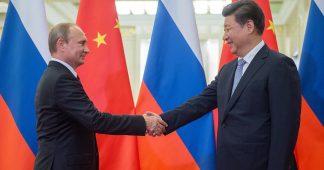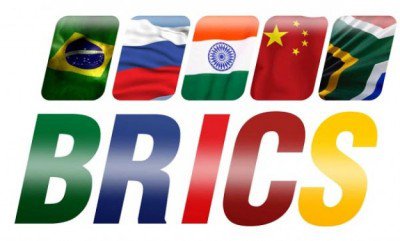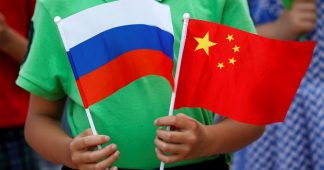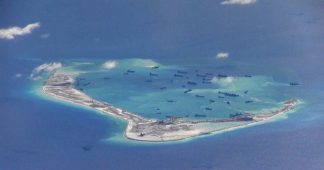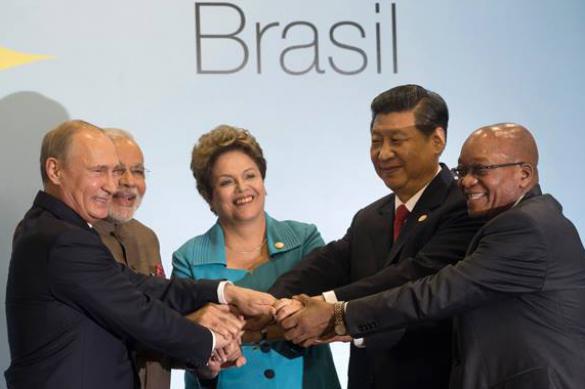US war planes and battleships to start using Indian bases
By Deepal Jayasekera
Indian Defence Minister Manohar Parrikar and his US counterpart, Ashton Carter, announced Monday that they have signed an agreement that gives US combat planes and warships and their personnel routine access to Indian military bases for resupply, repairs, and rest. The India-US Logistics Exchange Memorandum of Agreement (LEMOA) also allows the Pentagon to “forward position” materiel on Indian bases.
With the signing of the LEMOA, India has taken a major step toward becoming a “frontline” state in US imperialism’s drive to strategically isolate, encircle, and prepare to wage war on China.
This is being done entirely behind the backs of the Indian people. While various Indian military and geo- strategists chortle over the supposed leverage India will gain thanks to its alliance with Washington, the LEMOA is being publicly presented as largely benign. The Indian media is making much of the fact that the LEMOA is a reciprocal agreement that also provides for India’s military to use American bases—no matter that the difference between the global reach of the US and Indian militaries is exponential.
Similarly, Indian and US officials are playing down the possibility the LEMOA will result in US troops becoming the first foreign troops to be stationed in India since independence. However, there can be no doubt that Pentagon aims to use this agreement to the maximum and, in so far as it does, it will need pre-deployed US troops to protect and service its warplanes and battleships.
Washington has mounted a determined campaign to harness India to its predatory strategic agenda since the first years of this century. The Bush administration began pressing for India to enter into an LEMOA-type agreement shortly after the two countries announced in 2005 that they had forged a “global strategic partnership.” While the Congress Party-led government, which ruled India until May 2014, greatly expanded military and strategic cooperation with the US, it balked at the LEMOA for fear it would undermine India’s “strategic autonomy”—that is, its attempt to balance between the US, China, Russia and the other great powers—and make India a subordinate ally of the US in all but name.
Although India is a desperately poor country by virtually any measure, the strategists of US imperialism view it as a great geopolitical “prize.” It provides an ideal vantage point from which to project power across East, South and Central Asia, the Middle East, and much of Africa, and it commands the Indian Ocean, the world’s most important economic artery. India’s nuclear-armed military has a budget commensurate with France’s.
Highlighting the US’ strategic aims, Carter told the joint press conference he held with Parrikar in Washington on Monday that the signing of the LEMOA will “make the logistics of joint operations so much easier and so much more efficient.” The Pentagon is anxious to expand its military ties with India, transforming them from manifold joint exercises to “real-life” joint operations and calculates that the logistics support agreement will immensely facilitate this. In March, the head of the US Pacific Command, Admiral Harry B. Harris, publicly raised the possibility of joint Indian-US patrols across the Indian and Pacific Oceans, including the South China Sea.
Having gotten India to give the US military access to its bases and ports, Washington will now press New Delhi to sign two other agreements that the Pentagon deems as “foundational” when “partnering” with another military. These are the Communications and Information Security Memorandum of Agreement (CISMOA), for secure and interoperable communications in joint exercises and operations, and the Basic Exchange and Cooperation Agreement for Geospatial Intelligence (BECA), which provides for the exchange of topographical, nautical and aero-spatial data. Both would entail India’s military at least partially adopting US-designed and -controlled secure communication systems.
A key element in the US’ anti-China “Pivot to Asia” has been its push to ratchet up tensions in the South China Sea, by inciting China’s neighbors to press their maritime claims against Beijing and mounting provocative air and naval operations under the pretext of upholding “freedom of navigation and overflight.” Since January 2015, India’s Bharatiya Janata Party (BJP)-led government has repeatedly parroted Washington’s line in respect to the South China Sea dispute. At Monday’s joint press conference, Parrikar again aligned India with the US, declaring that “India and the United States have a shared interest in freedom of navigation and overflight and unimpeded commerce as part of a rule-based order in (the) Indo-Pacific.”
Led by the arch-communalist and self-styled “strongman” Narendra Modi, the BJP government has integrated India ever more completely into the US “Pivot” on the calculation that this will enable New Delhi to more readily realize its own great power ambitions, including asserting itself as South Asia’s regional hegemon. In addition to expanding military and strategic cooperation with the US, India has dramatically increased bilateral and trilateral ties with Washington’s most important Asian-Pacific allies, Japan and Australia. Last September, the US, Japanese, and Indian foreign ministers launched a “trilateral” dialogue, and this summer the US, Indian and Japanese navies staged the first of what are to be annual trilateral joint exercises in an area proximate to both the contested Senkaku, or Diaoyu, Islands and the South China Sea.
India’s government has also made clear it views the US as its most important international partner by dramatically increasing its collaboration with Washington. Parrikar’s meeting with Carter was the sixth since he became defence minister in November 2014. Currently, US Secretary of State John Kerry and Commerce Secretary Penny Pritzker are in New Delhi to join their Indian counterparts, Sushma Swaraj and Nirmala Sitharaman, for the “US-India Strategic and Commercial Dialogue.” Indian Home Minister Rajnath Singh will visit Washington in September for the “US-India Homeland Security Dialogue.”
To woo India into accepting the poisoned chalice of an alliance with the world’s most rapacious imperialist power, the US has been showering India with strategic concessions. These include offering to sell, and in some cases co-develop and co-produce, advanced weapons, support for India’s ambitions to become an Indian Ocean power, and helping India expand economic and security ties in Southeast Asia and Africa. During Modi’s visit to Washington last June, the Obama administration announced it has designated India a “Major Defence Partner,” giving it the right to buy the most advanced weaponry the Pentagon allows to be sold to US allies. At Monday’s press conference, Carter insisted that the signing of the logistics agreement will facilitate the transfer of advanced military technology to India.
Underscoring the extent of Indo-US military-strategic ties, the Pentagon now conducts more military exercises with India than any other US ally. Next month, the US and Indian armies will stage their twelfth annual exercise, this time in Uttarakhand, a mountainous state in northern India that lies adjacent to China. In an interview with the Voice of America, Lt. Gen. Stephen Lanza, commander of the US Army’s I Corps, boasted, “Not only are we just training together … we’re completely integrated both with the Indian Army and our Army working together down at platoon level.”
India’s ever more expansive military-strategic partnership with the US has ominous, incendiary implications for Asia and the world. Forbes exulted over the US’ success in recruiting a new satrap, declaring, “Instead of having to build (military) facilities virtually from the ground up, as in Afghanistan and Iraq, the US has the benefit of simple arrangements for the tremendous Indian facilities.”
Most immediately threatened are India’s neighbours China and Pakistan. Islamabad has for years been warning that US support for India, including the boost Washington gave India’s strategic nuclear program under the 2008 Indo-US Civilian Nuclear Accord, has overturned the balance of power between South Asia’s rival nuclear-armed states. Modi, in tandem with his ever-more pronounced tilt toward Washington, has increased pressure on Pakistan. His government has instructed border commanders to assume a more aggressive stance in cross-border firing exchanges, is refusing any high-level talks with Pakistan until it demonstrably accepts Indian predominance, and is now making insurgency-rocked Balochistan an issue in Indo-Pakistani relations.
To the Modi government’s chagrin, the Obama administration has not given India a blank cheque in dealing with Pakistan, its traditional military ally in South Asia and the logistical linchpin of its occupation of Afghanistan. However, relations between Washington and Islamabad are increasingly fractious, as Pakistan has responded to the burgeoning Indo-US alliance by deepening its own strategic cooperation with China. India publicly, and the US privately, are incensed at Beijing’s plan to invest $46 billion in building an economic corridor through Pakistan that would link western China with the Balochistan Arabian seaport of Gwadar. The China Pakistan Economic Corridor would enable Beijing to partially counteract the US strategy to impose an economic blockade on China by seizing Indian Ocean and South China Sea “chokepoints” in the event of a war or war crisis.
But the LEMOA and India’s integration into the US strategic agenda also has major implications for Russia, which like China, is the target of a concerted US strategic offensive, involving provocations, threats and preparations for full-scale war, including the use of nuclear weapons.
India’s close military-strategic ties with Moscow date back to the Cold War. However, the US has surpassed Russia as India’s largest military supplier and the Indian and US militaries are, as exemplified by the LEMOA, increasingly enmeshed. Washington’s strategic turn to New Delhi has been driven by its determination to thwart China’s rise. But there is no question that at least since 2014, when India failed to fall into line with the US’ depiction of Russia as the “aggressor” in the Ukraine, a key objective of Washington’s India policy has been to weaken and ultimately break New Delhi’s strategic alliance with Moscow.
